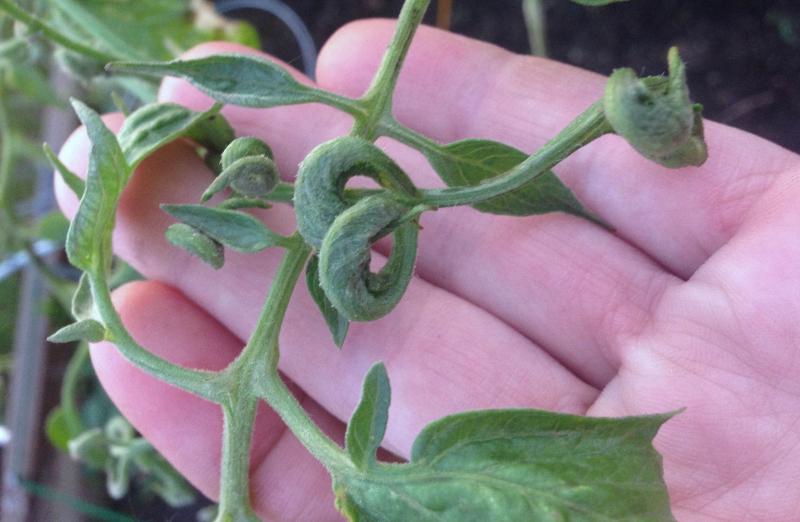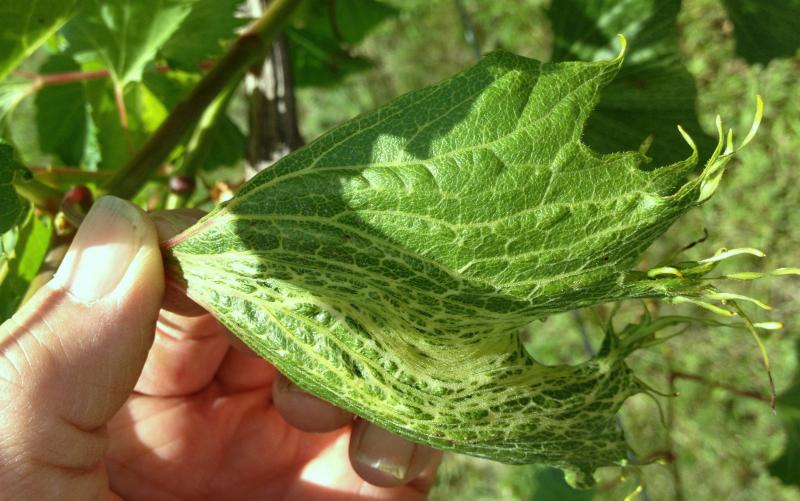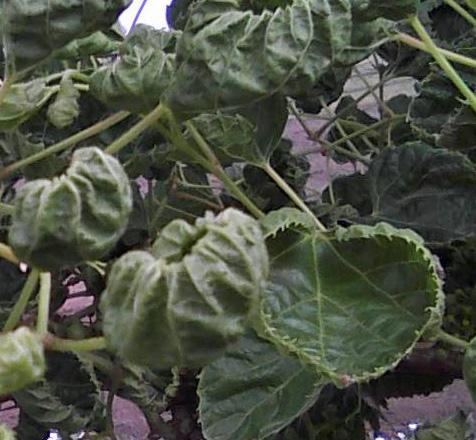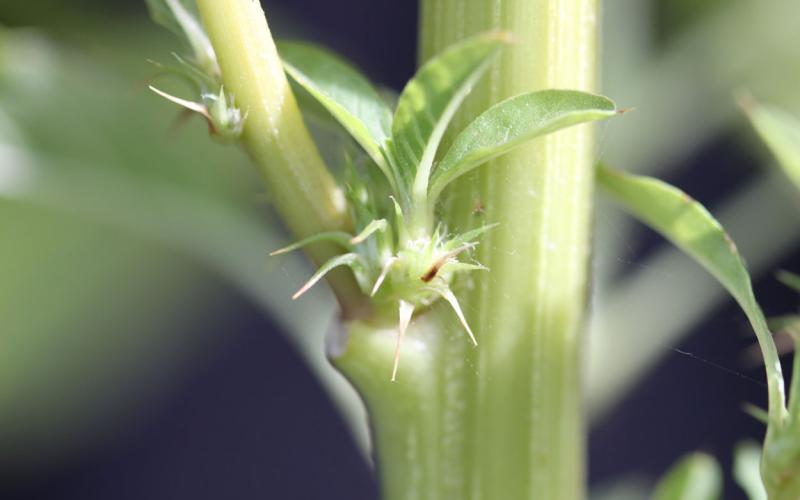
Written by Rhoda Burrows, former Professor & SDSU Extension Horticulture Specialist.
Each year in early summer, many gardeners as well as commercial fruit and vegetable growers begin to notice distorted leaf growth on crops such as tomatoes, potatoes, and grapes (Figure 1). Most commonly, the cause of the distortion is due to herbicide application to a nearby field, lawn, road bank, or other area, that has drifted to these very susceptible crops.
Phenoxy-type herbicides, such as ones containing 2,4-D, are most often the culprit. These herbicides are absorbed by the plant and transported to its growing points, and can cause damage at just 1/100 of the label rate. Unfortunately, they are quite volatile (especially the ester types), and can drift up to a mile or more, especially with even relatively light (10 mph) winds, and some formulations can even re-volatilize for days after spraying, when temperatures are over 80 to 90 F degrees. Because air currents are usually quite variable, damage can be spotty, and may even “skip” over one portion of a field, making it more difficult to determine the source.
Symptoms of Herbicide Damage

Symptoms on the plants commonly include small misshapen leaves, which may be curled tightly and thickened (Figure 1). On tomatoes and potatoes, the distorted leaf may feel rubbery; on grapes, the leaves tend to stay flat, but have enlarged veins (Figure 2) and may feel leathery. Because the herbicide affects the growing points of the plant, only the leaves that grew after the chemical exposure will be affected. If the exposure has been light, the plant may outgrow the damage, but will likely have decreased yield. In tomatoes, it’s been shown that concentrations of the herbicide in the plant will drop rapidly in the three weeks after exposure, but then remain at low levels.

Dicamba Products
Residues of Dicamba, another common herbicide, will persist longer in the plants than 2,4-D residues. Dicamba can also persist in the soil for three or more months, where it can be absorbed by the roots, and translocated through the plants. Dicamba-caused symptoms may be similar to 2,4-D, but may also exhibit more leaf “cupping” (Figure 3). Woody plants such as grapes may suffer long-term damage from the exposure, as the xylem and phloem tissues that move water and nutrients through the plant may undergo the same type of irregular growth observed on the leaves. One study showed that herbicide damage can cause delayed fruit ripening for up to three seasons after exposure. For more information on herbicide effects on grapes, see the February 12, 2013 edition of Northern Grape News.
Protecting Your Plants
How can the problem be avoided? First, if you are spraying, avoid any areas with sensitive plants, even on windless days. Second, choose an amine type formulation rather than an ester, as it will drift less. Third, use sprayer nozzles designed to minimize drift, and when feasible, add an adjuvant that also decreases drift. And always read the label to find out not only the rate and seasonal restrictions, but also which crops the herbicide can be applied to, any restrictions to use of the crop (some herbicides should not be applied to crops that will be used for mulch), what the plant-back period is for sensitive crops, and whether there are additional protections needed for surface or ground water.
Reporting Damage
If you have sensitive crops, keep meticulous records about what you have applied at what rate and time, including weather and crop stage. Check plants every few days during the spray season. If you suspect spray exposure, check the plants daily and note the first observed symptoms. If you will be reporting damage, flag the affected plants, take pictures, note weather conditions, and contact the South Dakota Department of Agriculture (SDDA) at 605.773.5425. Both homeowners and commercial growers can report damage.


